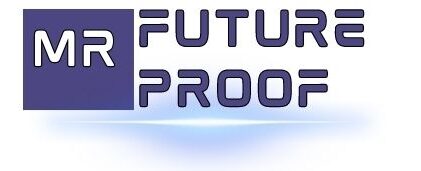Personalized learning strategies can effectively cater to the diverse needs of students. This can be done through a variety of methods and approaches, such as differentiated instruction, student-centered learning, and adaptive technology.
In today’s educational landscape, ensuring that all students receive a high-quality education that meets their individual needs is essential. Personalized learning strategies are an effective way to achieve this goal. By tailoring instruction to the specific needs and strengths of each student, educators can create an environment that fosters success and engagement.
This approach can encompass a variety of techniques, from small-group instruction to adaptive technology that adjusts to each student’s progress. By understanding and implementing personalized learning strategies, educators can help all students reach their full potential.

Credit: www.teachthought.com
Benefits Of Personalized Learning In Revolutionizing Education
Improved Student Engagement And Participation In The Learning Process
Personalized learning creates a more engaging and participatory learning environment that encourages students to interact and learn at their own pace. Some key points to consider include:
- Personalized learning programs allow for more individualized instruction that caters to each student’s specific learning needs.
- Students are given the ability to learn at their own pace, which improves engagement and participation.
- Teachers can use personalized learning methods to create more interactive and collaborative lessons that promote student involvement.
- Students are able to take ownership of their learning experience, which makes them more invested in the learning process.
Enhanced Critical Thinking Skills Of Students
Personalized learning promotes critical thinking, ensuring that students develop a range of skills that will benefit them in their future academic and professional pursuits. Some key points to consider include:
- Personalized learning programs encourage students to think critically about their learning and to seek out alternative perspectives on the topics they are studying.
- Through personalized learning, students become more active learners, which helps them to develop strong analytical and problem-solving skills.
- Students are given the opportunity to develop their own learning goals and to work towards achieving them, which enhances their ability to think independently and creatively.
- Personalized learning allows for more experiential, hands-on learning, which promotes the development of critical thinking and problem-solving skills.
Increased Retention And Application Of Knowledge
Personalized learning ensures that students are able to retain and apply the knowledge they acquire in the classroom. Some key points to consider include:
- Personalized learning programs are designed to cater to students’ individual needs and interests, which makes learning more relevant and engaging.
- Students are given the opportunity to apply their learning to real-world scenarios, which helps them to understand how their knowledge can be used outside of the classroom.
- Personalized learning promotes active learning, which increases retention and helps students to remember what they learn over the long term.
- Through personalized learning, students are able to develop a deeper understanding of the material they are studying, which enables them to apply their knowledge in new and novel ways.
Personalized learning has numerous benefits that go far beyond the traditional classroom model. By creating a more engaging, interactive, and participatory learning environment, personalized learning ensures that all students, regardless of their abilities, are given the tools they need to succeed in the classroom and beyond.
Top Personalized Learning Strategies For Revolutionizing Education
Personalized learning strategies have proven to be an effective way of meeting the diverse needs of students. These methods have revolutionized education in many ways, providing an opportunity for learners to take charge of their own learning by tailoring their experiences to their unique learning styles.
Below are some top personalized learning strategies that can make a significant difference in student outcomes:
Mastery-Based Learning
Mastery-based learning is a strategy that focuses on students demonstrating mastery of a subject before moving onto the next level. Students who master a topic can move on to the next, allowing them to learn at their own pace. Below are the key points:
- Mastery-based learning empowers students to regulate their pace and participate more meaningfully in the learning process
- It allows students to take control of their education and meet their goals at their own pace
- Mastery-based learning encourages deeper understanding of concepts and strengthens the application ability of students
Personalized Assessments
Personalized assessments assist educators and students in identifying where learners are in their educational journey in relation to objectives. These assessments provide information on the student’s strengths and weaknesses, allowing instructors to tailor instruction to meet the needs of each individual student.
Below are the key points:
- Personalized assessments enable educators and students to understand their competency levels properly
- They facilitate tailored educational support by addressing specific gaps and enhancing performance appropriately
- Personalized assessments can boost learner confidence and motivation levels
Adaptive Learning Technologies
Adaptive learning technology is a way of utilizing intelligent software to tailor learning experiences to the unique needs of each student. These resources enable personalized instruction by identifying the student’s learning style, knowledge level, and challenges, then tailoring instruction in real-time.
Below are the key points:
- Adaptive learning technologies allow students to learn at their own pace
- This learning approach matches a student’s personalized learning plan to achieve better learning outcomes
- Adaptive learning technologies can collect data that helps inform teachers about student progress
Gamification Of Learning
Gamification is a teaching strategy that integrates game mechanics and elements such as point systems, rewards, and progress visualizations into the learning process. These interactive elements can make learning more engaging and motivating for students. Below are the key points:
- Gamification of learning can improve student motivation and engagement with their education
- Games and game elements can provide the necessary feedback to motivate learners
- Gamification can help learners develop problem-solving abilities and more significant collaboration skills.
Project-Based Learning
Project-based learning is a teaching approach that allows students to acquire knowledge and skills by directing their own learning. It focuses on students completing long-term projects that develop skills such as critical thinking, problem-solving, communication, and creativity. Below are the key points:
- Project-based learning helps students develop practical problem-solving skills.
- It enables students to learn from the mistakes they make and find innovative solutions on their own.
- Project-based learning can prepare students to achieve real-world scenarios.
Personalized learning strategies provide students with supportive environments that align with their individual learning styles. These strategies are critical to student engagement and academic success. By implementing these top personalized learning strategies, educators can meet the needs of their students and improve their classroom outcomes.
Implementation Of Personalized Learning Strategies In Schools
Personalized Learning Strategies: Meeting The Diverse Needs Of Students
Personalized learning strategies can be as effective as a learning solution, especially when implemented in schools to help meet up with the diverse needs of the students. Personalized learning provides the room for a unique and customized learning experience that aligns with the students’ individual needs, abilities, and aspirations.
This article will discuss the implementation of personalized learning strategies in schools, highlighting the importance of teacher training and support, successful examples of schools successfully implementing personalized learning strategies and the challenges and potential solutions to implementing personalized learning strategies in schools.
Importance Of Teacher Training And Support In Implementing Personalized Learning Strategies
For personalized learning strategies to succeed, teachers require proper training and support from school administrators. The training must focus on equipping teachers with the necessary skills and knowledge of the personalized learning approach. Some of the essential points that teachers must be trained in include flexible classroom designs, technology integration, data analysis, and use of project-based learning.
To achieve this, there should be a well-structured professional development plan that is consistent with the learning outcomes of the students. In addition to training, teachers must receive adequate support from school administrators and peers, to build an environment of collaboration that fosters continuous learning.
Here are some key factors that teachers should be trained in:
- Flexible learning designs
- Integration of technology in the classroom
- Mastery of data analysis methods
- Proficiency in project-based learning
Successful Examples Of Schools Successfully Implementing Personalized Learning Strategies
Several schools have implemented personalized learning strategies successfully. These success stories validate the effectiveness of a personalized learning approach. For instance, vista high school, a public school in california, adopted a competency-based model that emphasizes mastery of skills and understanding of concepts, rather than the traditional approach of grades.
This approach has seen a tremendous improvement in students’ achievement, increase in graduation rates, and more students being eligible for higher education.
Middletown high school in connecticut is another successful example of personalized learning strategies implementation. The school combined mastery-based grading with one-on-one student-teacher meetings to identify areas of strength and improvement. The outcome was exceptional as students improved in grades, and dropout rates reduced significantly.
Challenges And Potential Solutions To Implementing Personalized Learning Strategies In Schools
Despite the benefits of personalized learning strategies, it comes with various challenges that prevent schools from adopting the approach. One of the main challenges is the resistance to change, with many teachers and administrators not willing to disrupt the traditional methods of teaching.
Furthermore, inadequate resources, including finance, infrastructure, and tech-savvy personnel, pose a threat to the success of personalized learning strategies.
To address these challenges, schools can:
- Arrange seminars and workshops to educate teachers about the advantages of personalized learning strategies over traditional learning.
- Provide a budget for technology, infrastructure, and training.
- Plan for a smooth transition process that involves parents, teachers, and students, amongst others.
Implementing personalized learning strategies can transform the learning process and raise the standards of education. Schools that have successfully implemented personalized learning strategies show that it is possible to achieve better academic outcomes and improve students’ skills and understanding of concepts.
However, to achieve this, it is necessary to equip teachers with the necessary skills and knowledge through proper training and support. Furthermore, there is a need for proper planning and support from administrators and stakeholders to overcome the potential challenges.
Frequently Asked Questions Of Personalized Learning Strategies: Meeting The Diverse Needs Of Students
What Is Personalized Learning?
Personalized learning is an educational approach that tailors teaching to individual student’s needs, learning styles, and interests.
How Does Personalized Learning Benefit Students?
Personalized learning helps students to have a deeper understanding of the concept, increases student engagement, and accountability.
How Can Teachers Implement Personalized Learning In The Classroom?
Teachers can implement personalized learning by collecting data on students’ learning, creating flexible learning spaces, and providing choice in assignments and assessments.
Conclusion
By utilizing personalized learning strategies, educators can tap into the diverse learning needs of their students. It allows for a more customized learning experience that promotes student engagement, motivation, and achievement. These strategies help teachers identify students’ strengths and weaknesses, allowing them to adjust their teaching methods accordingly.
Students are empowered to take ownership of their learning, leading to increased confidence and a sense of responsibility. Personalized learning strategies also offer the opportunity to incorporate a variety of teaching methods, such as technology-integrated instruction, small group work, and one-on-one tutoring.
By providing personalized learning experiences, teachers can help bridge the achievement gap and promote equity in education. Personalized learning strategies are at the forefront of improving education. It’s time to embrace the power of personalization to meet the needs of all our students.

